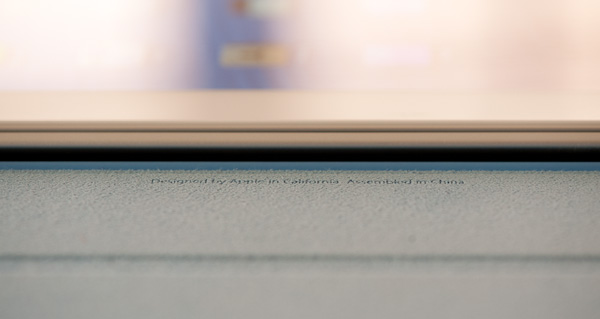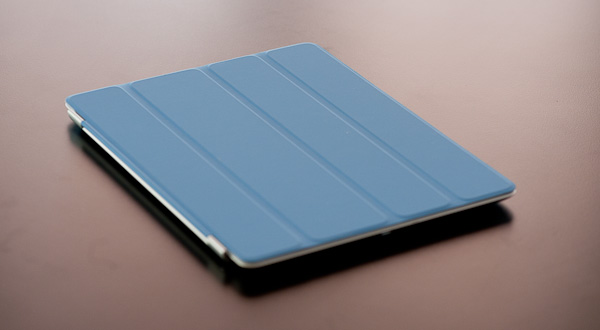iPad 4 (Late 2012) Review
by Anand Lal Shimpi on December 6, 2012 4:40 PM ESTFinal Words
The 4th generation iPad is a good evolution over the 3rd generation model. It doesn't fundamentally change the device or its function, it just makes it better. Battery life and performance are both improved over the iPad 3, and on the graphics side we finally have an SoC capable of driving good looking games at the iPad's native resolution. I don't know that there's substantial enough of a change to warrant an upgrade from the iPad 3 (unless you happen to be a game developer), but if you've been considering the iPad the 4th gen is a definite improvement over its predecessor.
If you're torn between the big and mini iPads, I've been recommending the mini for those who plan on traveling a lot with their tablet and the iPad 4 for those who will mostly use it at home. The exception to the travel stipulation is if you're a photographer and plan on using your tablet to show your portfolio/proofs/etc, in which case the color accuracy of the iPad 4 trumps the mini's portability.
It's interesting to me that the chassis and thermals haven't really changed since the iPad 3. Given the short cycle time between the 3rd and 4th generation iPads, I suspect there's not a whole lot of time to implement any major changes. I do almost wonder however if we won't see this chassis stick around for one more generation. I just don't know that there's room to shrink the design any further without substantial improvements in display efficiency.
Long term I do wonder what the future holds in store for the big iPad. The iPad is very similar in footprint to the 11-inch MacBook Air, and once the 11-inch MBA gets Haswell/Broadwell we may even see similar idle power battery life. The 13-inch MacBook Pro with Retina Display is pretty much the 13-inch rMBA that everyone wanted, I wonder if a future 9.7-inch iPad may be the same thing for the 11-inch MBA. Ultimately this brings convergence to mind, which itself leads to a lot of questions about form factor, OS and ISA. Apple has been quick to dismiss Microsoft's attempts to bring touch to notebooks, but there's a lot of history around Apple laughing at something only to bring forth its own take later on.
Taking a step back and looking at the market as a whole, there is competition the iPad has today that it didn't previously. Google's Nexus 10 surpasses the iPad 4 in pixel density, although it loses out in color accuracy. I can't stress enough that the competition really has to focus on calibrating its displays in addition to spending money on delivering a good panel. The Nexus 10 is priced more aggressively at $399 and ships with a faster CPU as well. The latter is interesting, especially given how recently Apple introduced its Swift CPU architecture. I wonder if we'll see Apple stick with the holiday launch schedule or move to a different release cadence once again, in order to continue to remain at the forefront of silicon technology.
When choosing between the iPad 4 and Nexus 10 decision boils down to, as is often the case, whether or not you feel more at home in Android or iOS. I've viewed the divide there as a line separating a computing device from an appliance. There's overlap in capabilities, but the overall experience tends to fall along those lines for me. You need to ask yourself what type of device you're more interested in when it comes to a tablet. I suspect Apple's success in the mainstream market with the iPad is due, in no small part, to just how appliance-like the iOS experience can be. It's not for everyone but I can see how it has resonated well among some audiences. Google's $100 price advantage isn't insignificant, and similar to our Nexus 7 vs. iPad mini recommendation, if what you want is a tablet and not necessarily a tablet that runs iOS, the Nexus 10 takes the cake.
Microsoft is now in the mix with Surface RT and Windows RT/8 tablets from its partners. These offerings are pursuing a slightly different user who wants convergence between a tablet and notebook. Conceptually I like the idea. I'd love to be able to only carry around a single device that serves as a wonderful tablet and productive notebook at the same time. I don't believe any of those devices are quite there yet, which makes tablet/notebook convergence still a fantasy for me.












113 Comments
View All Comments
s44 - Thursday, December 6, 2012 - link
First pixel density is everything, now color calibration... Coincidentally when Apple starts promoting their selling point.zanon - Thursday, December 6, 2012 - link
None of this is new stuff kid. Pixel density has been something that a lot of us have wanted for a long time, it just somehow never was a priority for anyone. I can easily remember being awed by the IBM T220 (a 22" 3840×2400 [WQUXGA] screen) back in 2001. It used multiple dual link DVI, and the launch price was around $18k, dropping to around $8.5k a year or two later. I hoped back then that it would rapidly proliferate and descend at least to the mere "high end" level, rather then "stratospheric", but it was not to be. Similarly, color has also always mattered for a lot of us. I'm sitting in front of an NEC display built with that in mind, but there has been a whole market of higher end displays and calibration hardware since practically the dawn of color.Just because it's only now that, at long last, the industry is moving out of its previous equilibrium doesn't mean there's some conspiracy or "moving targets" or whatever other stupid BS you think of. It would have been nice to see this getting pushed harder and wider literally 10 years ago. Better late then never though. Excellent color and density should be the standard, not the exception, and I'm delighted to see everything suddenly leaping forward again. Density came first, as the most obvious, lowest hanging fruit. Color is next, first with tighter filters, hopefully next year with IGZO and quantum dot films. 120 Hz becoming standard everywhere would be nice too. Whoever helps make that happen gets a hearty thanks from me, even if I never buy any of their stuff directly.
Sabresiberian - Friday, December 7, 2012 - link
You are so right here! The introduction of the LCD set us back at least a decade, in terms of color quality, refresh rate, and pixel density.I'm not a great fan of Apple the company, but some things they do right, and do better than the PC industry. Displays in portable devices is one of those things. I'm not in the market for anyone's tablet, but I am tempted by the Retina Display notebooks.
PC portable computer manufacturers take notice: even a somewhat anti-Apple person is considering buying Apple over your junk displays. Time for you to step up your game!
Arbee - Friday, December 7, 2012 - link
I would kill for a 20" or 25" 4:3 LCD panel with something like 2048x1536 resolution on a good quality IPS panel with decent color fidelity.Heck, at this point I'd like to see any new LCD display that's 4:3 other than what's in the iPad. 4:3 is still preferable for a lot of actual work on computers (programming, word processing, spreadsheets, etc) but the industry decided unilaterally we were all just content consumers and we need a screen optimized only for movies.
tim851 - Saturday, December 8, 2012 - link
This is the "logic" of the anti 16:x crowd that I don't get.So you would kill for a 25" 4:3 panel with 2048x1536 pixels.
Why?
You are aware that a 30" 16:10 panel with 2560x1600px is
1) physically higher by almost an inch
2) has 64 more vertical pixels
Why the dislike for an extra 512 horizontal pixels?
Also, if you are willing to accept a 20" 4:3 screen: a 27" 2560x1440 screen that sells from 300$ on ebay is also physically higher (by more than 1 inch) and only has 94 viewer vertical pixels (6%)...
londiste - Saturday, December 8, 2012 - link
who said anything about dislike for horizontal pixels? it is dislike for lack of vertical pixels.anandtech site we're on fits just fine into half of my 1920 horizontal pixels, but the 120 extra vertical pixels that my 1920x1200 screen has over 1080p are extremely useful.
tim851 - Saturday, December 8, 2012 - link
The guy I responded to would "kill" for a display with 2048x1536 pixels.I wonder why, when he could have bought a display with 2560x1600 years ago.
That is MORE VERTICAL PIXELS and MORE PHYSICAL SCREEN HEIGHT.
Also, Anandtech is a very vertical site, I don't see how 120 extra pixels is helping you much there. Is scrolling 10 screens down instead of 9 really bothering you?
I use Firefox with the tree-style tab addon which puts the tabs in the sidebar, freeing up vertical space and practically using horizontal space. A lot of applications these days are optimized to use horizontal space.
Had a 21" 4:3 CRT until three years ago and let me tell you I gladly accepted a 16:9 24" LCD.
I for one prefer using two 'shallow' windows side-by-side instead of once very deep window.
Olaf van der Spek - Saturday, December 8, 2012 - link
1600p being 5x as expensive as 1080p is the real problem.Yes, more vertical pixels really matter in some cases. It's a bit like running out of memory and having to use swap, it's much slower.
Arbee - Monday, December 10, 2012 - link
I don't dislike the extra horizontal pixels, I just want more vertical pixels to go with it. I am a programmer; it is a *substantial* productivity boost to be able to see an entire function on the screen at once. Seeing more width is comparably of very limited benefit.And a $300 27" anything is unlikely to have a good-quality panel in it. I am so done with screens that go purple if you don't keep your head perfectly still (that on a $1800 Toshiba laptop) or have a weird tint to them that you can't get rid of.
xyzzy1 - Wednesday, December 12, 2012 - link
Much like Digital/CD set back musical reproduction. Digital is still trying exceed what top end analugue playback achieved! Off topic but couold not resist....